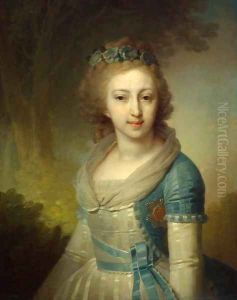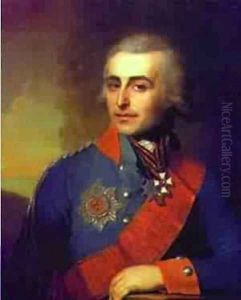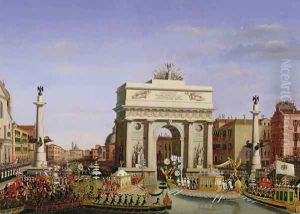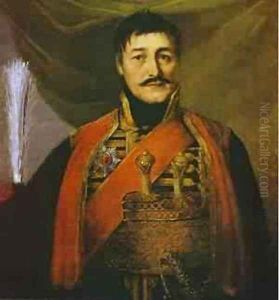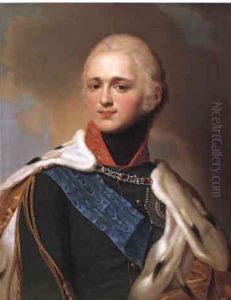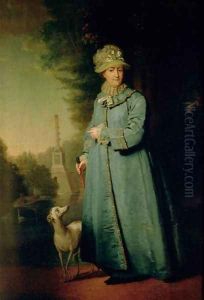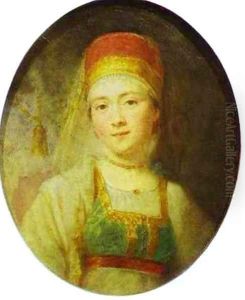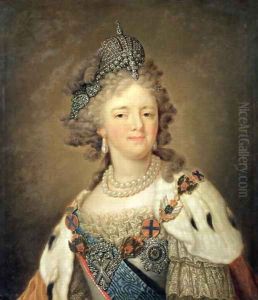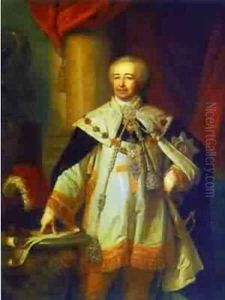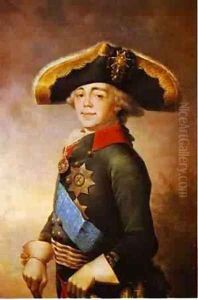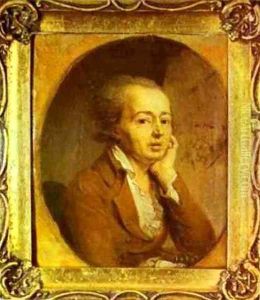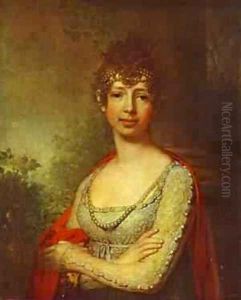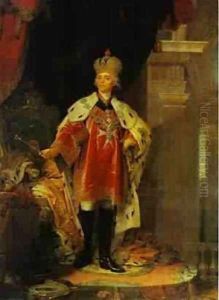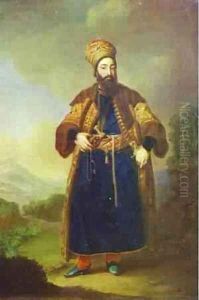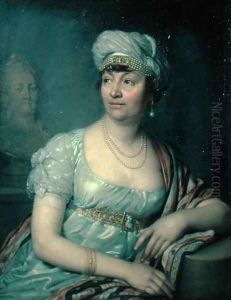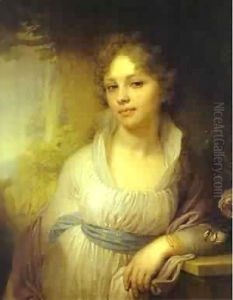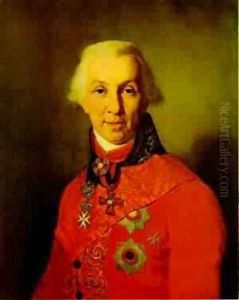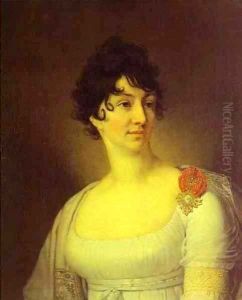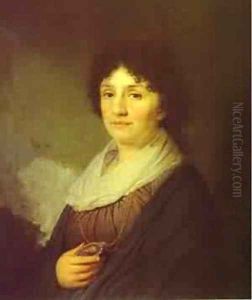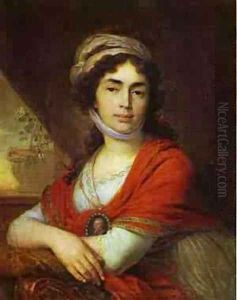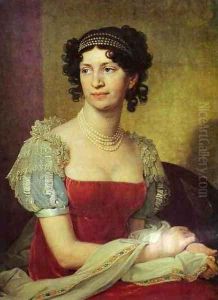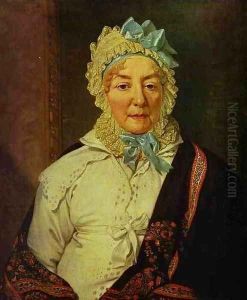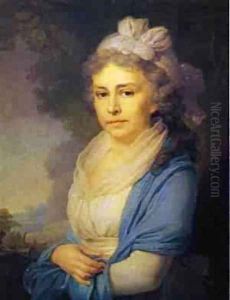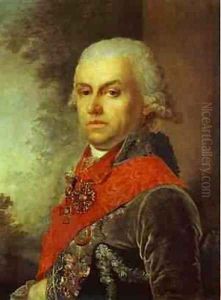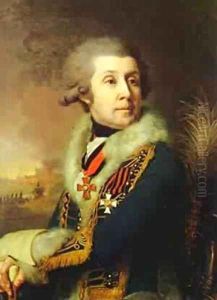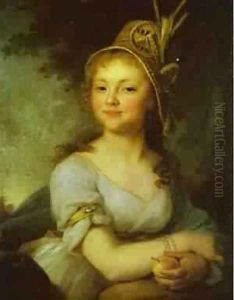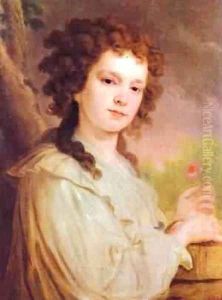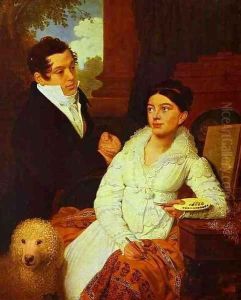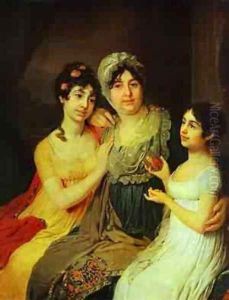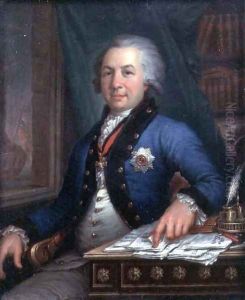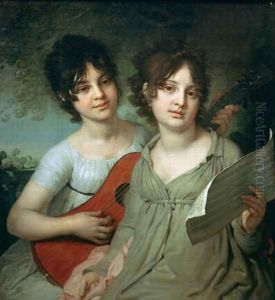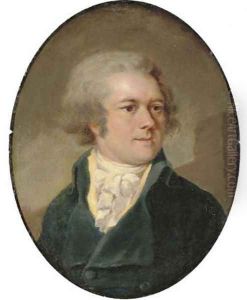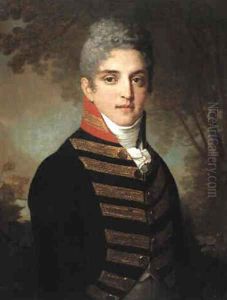Vladimir Lukich Borovikovsky Paintings
Vladimir Lukich Borovikovsky was a prominent Russian portraitist of Ukrainian origin who created a distinctive style that combined elements of Russian realism with neoclassical aesthetics. Born on July 24, 1757, in Myrhorod, in the Cossack Hetmanate (now Ukraine), he was initially trained by his father, who was a Ukrainian icon painter. Borovikovsky moved to Saint Petersburg in 1788 and was introduced to the art circles and the court, which marked the beginning of his successful career as a court artist.
During his stay in Saint Petersburg, Borovikovsky became a pupil and protégé of Russian artist Dmitry Levitzky, from whom he learned the advanced techniques of portrait painting. Borovikovsky’s work was also influenced by the French neoclassicism that was prevalent during his time. His portraits are known for their delicate treatment of the sitters, capturing both their physical likeness and the psychological subtleties.
Borovikovsky's most famous works include portraits of Russian nobility and royalty, such as his depiction of Catherine the Great on her deathbed, and portraits of Empress Maria Feodorovna and Paul I of Russia. His painting 'Portrait of Mirza-Khasan Khan' is also notable for its fine rendering and detail. In addition to his portraits, Borovikovsky also painted religious and mythological scenes, showing versatility in his subjects.
Despite his success, Borovikovsky never lost touch with his Ukrainian roots, often returning to his homeland and painting portraits of local figures and landscapes. His works provide valuable insights into the cultural and social life of his era in both Ukraine and Russia.
Vladimir Lukich Borovikovsky passed away on April 6, 1825, in Saint Petersburg. He left behind a legacy as one of the most revered portrait artists of his time, with his paintings still admired for their elegance, grace, and refined technique. His contribution to Russian art history is significant, and his works continue to be celebrated in art collections and museums in Russia, Ukraine, and beyond.
